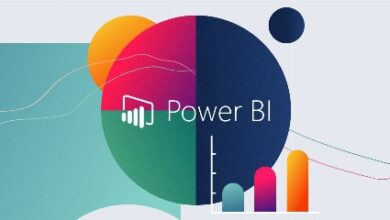Leveraging Instagram Ads: A Beginner’s Guide

Introduction
In today’s digital marketing landscape, Instagram has emerged as one of the most influential social media platforms. With over a billion active users, it offers an unparalleled opportunity for businesses to connect with their target audience. Instagram ads and Instagram story Viewer by Insta Navigation have proven to be highly effective for brands looking to increase visibility, drive traffic, and boost sales. This beginner’s guide will walk you through everything you need to know about leveraging Instagram ads to grow your business.
Why Instagram Ads Matter
Instagram ads allow businesses to reach a highly engaged audience through visually appealing and interactive content. The platform’s advanced targeting options ensure that ads are shown to users who are most likely to be interested in your products or services. Moreover, Instagram’s integration with Facebook’s advertising system provides access to powerful tools and insights that can optimize your ad campaigns for better performance.
Understanding Instagram Ads
Types of Instagram Ads
- Photo Ads
- These are simple yet effective ads featuring a single image. Photo ads are ideal for showcasing products, services, or promotional offers with a clear and compelling visual.
- Video Ads
- Video ads can be up to 60 seconds long and allow for more dynamic storytelling. They are great for demonstrating product features, sharing customer testimonials, or providing a behind-the-scenes look at your brand.
- Carousel Ads
- Carousel ads enable you to include multiple images or videos in a single ad. Users can swipe through the carousel, making these ads perfect for showcasing different products, and features, or highlighting a step-by-step process.
- Story Ads
- These full-screen ads appear between users’ stories and can include photos or videos. Story ads are highly immersive and can drive strong engagement due to their prominence and interactivity.
- Collection Ads
- Collection ads combine a cover image or video with product images from your catalog. They are designed to facilitate a seamless shopping experience by allowing users to browse and purchase products directly from the ad.
- Explore Ads
- These ads appear in the Explore feed, where users discover new content based on their interests. Explore ads help you reach a broader audience beyond your followers.
Instagram Ad Placements
Instagram offers several ad placements:
- Feed Ads: Appear in users’ main feed as they scroll through posts.
- Story Ads: Displayed between user stories, leveraging the full screen for a more immersive experience.
- Explore Ads: Shown in the Explore section where users discover new content.
- Reels Ads: Displayed within the Reels tab, perfect for short, engaging video content.
Setting Up Instagram Ads
- Create a Facebook Business Account
- Since Instagram ads are managed through Facebook Ads Manager, you need a Facebook Business account. If you don’t have one, create it by visiting accounts.
- Link Your Instagram Account
- Connect your Instagram account to your Facebook Business account. This can be done in the Business Settings section of Facebook Ads Manager.
- Define Your Campaign Objective
- Choose the objective that aligns with your business goals. Common objectives include brand awareness, reach, traffic, engagement, app installs, video views, lead generation, and conversions.
- Target Your Audience
- Utilize Facebook’s advanced targeting options to define your audience. You can target users based on demographics, interests, behaviors, and even custom audiences like email subscribers or website visitors.
- Set Your Budget and Schedule
- Decide on a daily or lifetime budget for your campaign and set the duration. Facebook Ads Manager will estimate the potential reach and results based on your budget.
- Design Your Ad Creative
- Create visually appealing ad content that resonates with your target audience. Use high-quality images or videos, compelling captions, and a clear call-to-action (CTA).
- Launch Your Campaign
- Review your ad settings and click the “Confirm” button to launch your campaign. Monitor its performance through Facebook Ads Manager and make necessary adjustments to optimize results.
Crafting Effective Instagram Ads
Designing Visually Appealing Ads
- High-Quality Images and Videos
- Ensure that your visuals are of high quality and resolution. Poor-quality images can negatively impact the perception of your brand.
- Consistent Branding
- Maintain consistency in colors, fonts, and overall style to reinforce brand identity. Consistent branding helps in building recognition and trust.
- Compelling Headlines and Captions
- Write headlines and captions that grab attention and convey your message succinctly. Use language that speaks directly to your audience and highlights the benefits of your product or service.
- Strong Call-to-Action (CTA)
- Include a clear and compelling CTA that encourages users to take the desired action, such as “Shop Now,” “Learn More,” or “Sign Up.”
Utilizing Instagram’s Creative Tools
- Instagram Stories Stickers
- Use interactive stickers like polls, quizzes, and questions in your Story ads to engage users and encourage interaction.
- AR Filters
- Augmented reality (AR) filters can make your ads more engaging and memorable. They allow users to interact with your brand in a fun and unique way.
- Product Tags
- Use product tags in your posts and Story ads to provide additional information and a direct link to purchase, making the shopping experience seamless.
Ad Copy Best Practices
- Keep It Short and Sweet
- Instagram is a visual platform, so keep your ad copy concise. Focus on delivering a clear message with minimal text.
- Highlight Key Benefits
- Emphasize the main benefits of your product or service. Tell users why they should care and how it can solve their problems or improve their lives.
- Use Emojis Wisely
- Emojis can make your ads more relatable and eye-catching. However, use them sparingly and ensure they align with your brand voice.
Targeting and Optimization
Advanced Targeting Options
- Custom Audiences
- Create custom audiences based on your existing customer data, such as email lists or website visitors. This allows you to target users who are already familiar with your brand.
- Lookalike Audiences
- Use lookalike audiences to reach new users who share similar characteristics with your existing customers. This is a powerful way to expand your reach and attract potential customers.
- Interest and Behavior Targeting
- Target users based on their interests, activities, and behaviors. For example, if you sell fitness equipment, you can target users who are interested in health and wellness.
Monitoring and Analyzing Ad Performance
- Key Metrics to Track
- Monitor key performance indicators (KPIs) such as reach, impressions, engagement, click-through rate (CTR), and conversions. These metrics will help you gauge the effectiveness of your ads.
- A/B Testing
- Conduct A/B testing to compare different versions of your ads. Test variations in visuals, headlines, captions, and CTAs to identify what resonates best with your audience.
- Adjusting Your Strategy
- Based on the performance data, make necessary adjustments to your targeting, ad creative, and budget. Continuously optimize your campaigns to achieve better results.
Budgeting for Instagram Ads
- Understanding Costs
- Instagram ad costs can vary based on factors such as targeting, ad placement, competition, and time of year. It’s important to understand these variables and set a realistic budget.
- Setting a Budget
- Decide on a daily or lifetime budget for your campaigns. Start with a smaller budget to test your ads, and gradually increase it based on performance.
- Maximizing ROI
- Focus on optimizing your ads for the highest return on investment (ROI). This involves refining your targeting, improving ad creative, and monitoring performance closely.
Success Stories and Case Studies
Brand Success Stories
- Fashion Brands
- Fashion brands like Glossier and Fashion Nova have successfully leveraged Instagram ads to drive brand awareness and sales. Their visually stunning ads, combined with effective targeting, have helped them build a strong presence on the platform.
- Tech Companies
- Companies like Apple and Samsung use Instagram ads to showcase their latest products and innovations. Their ads often feature high-quality visuals and compelling storytelling.
- Small Businesses
- Small businesses can also achieve significant success with Instagram ads. For example, a local bakery could use ads to promote new menu items and drive foot traffic to their store.
Influencer Marketing Integration
- Collaborating with Influencers
- Partnering with influencers can amplify your reach and credibility to become the top 10 Instagram accounts. Influencers have established trust with their followers, making their endorsements highly effective.
- Sponsored Content
- Collaborate with influencers to create sponsored content that aligns with your brand. This can include posts, stories, or even takeovers where the influencer manages your account for a day.
- Measuring Influencer Campaigns
- Track the performance of influencer campaigns by monitoring engagement, reach, and conversions. Use unique discount codes or tracking links to measure the impact accurately.
Common Challenges and Solutions
Navigating Instagram’s Ad Policies
- Ad Approval Process
- Ensure your ads comply with Instagram’s advertising policies to avoid rejection. Review guidelines on prohibited content, text overlay limits, and community standards.
- Policy Violations
- If your ad is disapproved, review the reasons provided and make necessary adjustments. Common issues include excessive text in images, misleading claims, and inappropriate content.
Staying Ahead of Algorithm Changes
- Adapting to Updates
- Instagram’s algorithm frequently changes, impacting ad visibility and engagement. Stay informed about updates and adapt your strategy accordingly.
- Engagement Strategies
- Focus on creating high-quality, engaging content that encourages interaction. High engagement rates can improve your ad’s performance despite algorithm changes.
Balancing Quality and Quantity
- Maintaining Quality
- While it’s important to post regularly, prioritize quality over quantity. High-quality content is more likely to resonate with your audience and drive better results.
- Content Planning
- Use a content calendar to plan your posts. This ensures a consistent posting schedule without compromising on the quality of your content.
Conclusion
Leveraging Instagram ads can significantly enhance your brand’s visibility, engagement, and sales. By understanding the different ad types, setting up targeted campaigns, crafting compelling ad creatives, and continuously optimizing your strategy, you can harness the power of Instagram to achieve your business goals. Whether you’re a small business owner or a marketing professional, this guide provides the foundational knowledge needed to start and succeed with Instagram ads.



